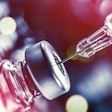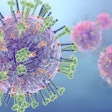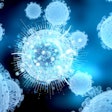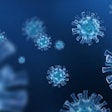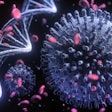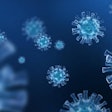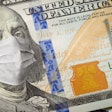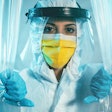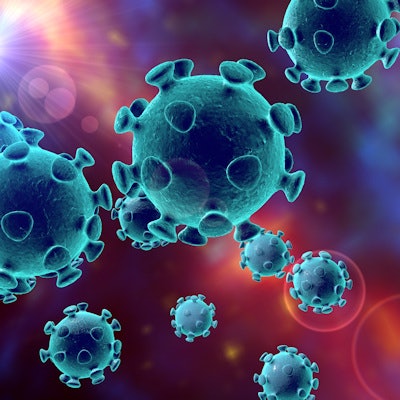
The novel coronavirus is presenting the global community with challenges in identification and classification. Due to the sneaky spread of the disease and delayed emergency responses, the ability to test for the disease is inadequate to stay ahead of its progress.
Viral outbreaks are not new in the 21st century, noted Ralph Baric, PhD, an epidemiology professor at the University of North Carolina at Chapel Hill. Baric provided an update on the state of the coronavirus, including how the current outbreak began and what's being done to combat the spread of the disease, at a briefing held on February 26 by the Congressional Biomedical Research Caucus.
Baric cited four major respiratory viruses that emerged in the past 17 years:
- The first outbreak of severe acute respiratory syndrome (SARS) in 2003; SARS originated in China and led to more than 700 deaths in the six months of the outbreak
- Influenza A (H1N1)pdm09, which triggered the 2009 global flu pandemic and resulted in the infection of an estimated 11% to 21% of the population and more than 12,000 deaths in the U.S.
- Middle East respiratory syndrome (MERS), a coronavirus that caused more than 700 deaths in 2012 with an astounding 37% mortality rate
- The novel coronavirus initially called 2019-nCoV, now known as SARS-CoV-2, which causes the disease COVID-19
Baric believes that SARS-CoV-2 could surpass the three previous outbreaks to become the largest outbreak of the 21st century to date.
Why it's difficult to stay ahead of SARS-CoV-2
Researchers have identified several molecular drivers that provide an advantage to SARS-CoV-2. First, all coronaviruses can traffic easily between species. They have the ability to fix errors in their genomes during replication and can tolerate high levels of mutations, making it easy for them to adapt to changes. Second, SARS-CoV-2 was primed to cause disease. It can bind to receptors in both animals and humans and causes the deadly acute respiratory distress syndrome (ARDS). Lastly, SARS-CoV-2 can spread asymptomatically. This makes it nearly impossible to track the spread of the virus and, therefore, it is difficult to contain.
The importance of confirming cases
Due to the particularly dangerous nature of asymptomatic spread, epidemiological models predict that SARS-CoV-2 will inevitably spread in the U.S. This underlies the importance of diagnostic testing and having rapid methods to detect the virus, even in patients who show no symptoms. Despite the first case of coronavirus being reported on December 1, 2019, Chinese scientists did not share genomic sequences until January 9-11. It was only then that other countries could begin emergency efforts in earnest.
In Baric's view, the Chinese made three classic mistakes at the onset of the outbreak due to their "SARS phobia." They initially stated that the virus was not SARS-related but rather a novel coronavirus. Additionally, initial reports specified that the virus was not pathogenic with no evidence of human-to-human transmission. This may be why national and international entities had a delayed response to the danger of the emerging virus.
The need for diagnostic testing kits in the U.S. is urgent. Concurrent with flu season, the tendency for sick individuals is to believe they have the flu. Without diagnostic kits, we will never know if these patients actually have the coronavirus, Baric said. Due presumably in part to the limited availability of testing kits, as of February 28, only 15 confirmed cases of COVID-19 had been reported in the U.S. (excluding people who returned to the U.S. on State Department chartered flights).
The U.S. Centers for Disease Control and Prevention (CDC) began issuing 2019-nCoV real-time reverse transcription polymerase chain reaction (RT-PCR) diagnostic panels to qualified labs on February 4. Many of these kits had to be recalled due to inaccurate primers. The agency this week developed and published a new protocol that it said will allow many U.S. labs to conduct testing using existing kits.
Countermeasures in development
Currently, two types of therapies are being developed to combat SARS-CoV-2: antiviral drugs and vaccines. Vaccines are difficult to develop because they are not efficacious in aged patients who are most at risk for COVID-19 and due to the potential for immune pathology caused by vaccination (Th2 response).
Vaccines will be crucial to eliminating the new coronavirus, Baric said, which is why his team is working on developing vaccines that protect not only against known strains of coronaviruses but also viruses that may occur in the future.
Meanwhile, drug repurposing efforts have led researchers to use broad-spectrum antiviral drugs as potential therapies. These small molecules can be used under compassionate care laws, meaning they can rapidly enter the clinic (within one month).
Gilead Science's remdesivir, a broad-spectrum antiviral drug initially developed for the treatment of Ebola, is set to be studied in two phase III studies for the treatment of adults with COVID-19. Gilead is interested in increasing the bioavailability of the product so it can be administered as a tablet instead of intravenous therapy. The studies are set to start enrolling in March, according to the company.
The Congressional Biomedical Research Caucus was established in 1989 to broaden the support and knowledge of basic and clinical biomedical research issues throughout the U.S. Congress in a bipartisan manner. The caucus membership is comprised of 75 members of the House of Representatives and eight members of the Senate with Reps. Steve Stivers (R-OH), Jackie Speier (D-CA), Steve Cohen (D-TN), and John Curtis (R-UT) serving as co-chairs.
The Coalition for the Life Sciences (CLS) is an alliance of professional organizations working together to foster public policies that advance basic biological research and its applications in medicine and other fields. The issues addressed by the CLS include science education, professional training, and the funding, management, and oversight of scientific work, especially by the federal government.








